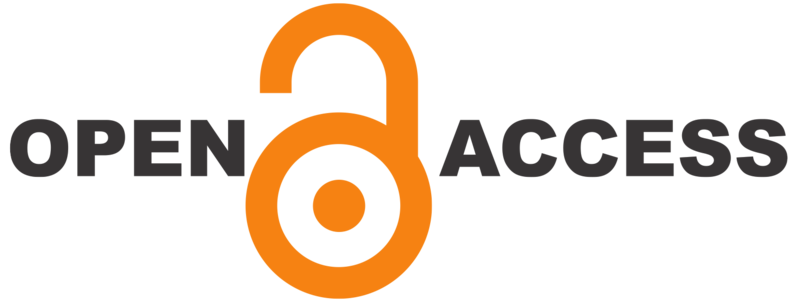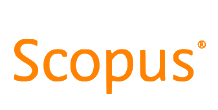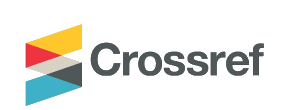How are CSU Advertising students being prepared to be industry-ready graduates?
DOI:
https://doi.org/10.21153/jtlge2013vol4no1art562Keywords:
industry-ready, advertising, authentic, key attributes, graduate employabilityAbstract
The need for University graduates to be industry-ready on completion of a tertiary degree is a topic which is being examined with increasing interest (Frawley & Litchfield, 2009). There is concern that Australia is facing a shortage of professional, qualified talent in the advertising industry (Corlette, 2010; Ma, 2012; Hayes Quarterly Report, 2013), thus placing an increasing demand on universities to produce industry-ready graduates who can fulfil advertising jobs and make an immediate and meaningful contribution to their employers. In an effort to successfully prepare graduates to make a meaningful initial workplace contribution, Charles Sturt University (CSU) is adopting strategies that aim to close the gap between the lecture hall and the workplace. One such strategy enables Advertising students at Charles Sturt University to spend their final year in the on-campus student advertising agency, Kajulu Communications. To transition easily into full time employment, students must apply best industry knowledge, practice and skills to a range of authentic situations to develop the abilities employers require of them in order to enter the workforce industry-ready. Whilst much has been written about graduate employability and the skills and attributes students need (Andrews & Higson, 2010; Boden & Nedeva, 2010; Bridgstock, 2009; Lowden, Hall, Elliott & Lewin 2011; Mason, Williams & Cranmer, 2009; Thomson, 2013), this paper examines the students’ perceptions of being industry-ready and identifies the key attributes relevant for course design.
Metrics
References
Andrews, J. & Higson, H. (2008). Graduate employability, ‘soft skills’ versus ‘hard’ business knowledge: A European study. Higher Education in Europe, 33:4. DOI: 10.1080/03797720802522627
Barrie, S. (2011). Educating students in a worthwhile way: Graduate attributes, curriculum renewal and community engaged learning & teaching. Australian Collaborative Education Network NSW/ACT Forum, 2nd May 2011.
Barrie, S., Hughes, C. & Smith, C. (2009). The national graduate attributes project: Integration and assessment of graduate attributes in curriculum. Sydney: Australian Learning & Teaching Council.
Biggs, J. & Tang, C. (2007). Teaching for quality learning at university (3rd ed.). Berkshire, England: McGraw Hill Education.
Blight, D. (2013). A degree in digital? You’re dreaming. AdNews, 3 May. Sydney: Yaffa Publishing Group, 24─27.
Boden, R. & Nedeva, M. (2010). Employing discourse: Universities and graduate ‘employability’. Journal of Education Policy, 25:1, 37─54. DOI: 10.1080/02680930903349489
Burns, R. B. (2000). Introduction to research methods, (4th ed.). Melbourne: Longman.
Bridgstock, R. (2009). The graduate attributes we’ve overlooked: Enhancing graduate employability through career management skills. Higher Education Research & Development, 23:1, 31─44. DOI: 10.1080/07294360802444347
Charles Sturt University. (2012). About CSU learning and teaching. Retrieved 27 October 2012 http://www.csu.edu.au/about/learning-and-teaching
Charles Sturt University. (2012). International students. Retrieved 26 December 2012 http://www.csu.edu.au/international
Charles Sturt University. (2011). University Strategy 2011-2015. Retrieved 26 December 2012 http://www.csu.edu.au/__data/assets/pdf_file/0014/124106/F1743-Update-2011-2015-CSU-Strategy_WEB.pdf
Corlette, P. (2010). AANA warns of talent shortage. AdNews, 23 September. Retrieved 10 December 2013 http://www.adnews.com.au/news/aana-warns-of-talent-shortage
Cranmer, S. (2006). Enhancing graduate employability: Best intentions and mixed outcomes. Studies in Higher Education, 31:2, 169─184. DOI: 10.1080/03075070600572041
Department of Industry, Innovation, Climate Change, Science, Research and Department of Education, Employment and Workplace. (2013). Core Skills for Work Developmental Framework. Canberra: Australian Government.
Feldgen, M. & Clua, O. (2010). Reflections of nine years of interdisciplinary capstone courses. Proceedings 40th ASEE/IEEE Frontiers in Education Conference, 11/ 2010, Washington, DC.
Frawley, J. & Litchfield, A. (2009). Engaging students and academics in work-ready learning contextualised for each profession in the curriculum. In The student experience, Proceedings of the 32nd HERDSA Annual Conference, Darwin, 6-9 July 2009: 141─153, NSW: HERDSA.
Hayes Quarterly Report. (2013). Sales and Marketing. October-December. Retrieved 10 December http://www.hays.com.au/report/HAYS_029618?ver=d
Hendy, N. (2011). Ad agencies wrestle with talent shortage. The Sydney Morning Herald. 9 September. Retrieved 10 December 2013 http://www.smh.com.au/business/media-and-marketing/ad-agencies-wrestle-with-talent-shortage-20110908-1jzs0.html
Holdsworth, A., Watty, K. & Davies, M. (2009). Developing capstone experiences. Centre for the Study of Higher Education: University of Melbourne.
Holmes, L. (2001). Reconsidering graduate employability: The 'graduate identity' approach. Quality in Higher Education, 7:2, 111─119. DOI: 10.1080/13538320120060006
Learning & Teaching Centre, Macquarie University. (2008). Assessment toolkit resources: Assessing final year students – capstone units. Learning & Teaching Forum: Assessing learning, communicating standards. Sydney. Retrieved from https://staff.mq.edu.au/public/download/?id=40229
Litchfield, A., Frawley, J. & Nettleton, S. (2010). Contextualising and integrating into the curriculum the learning and teaching of work-ready professional graduate attributes. Higher Education Research & Development, 29: 5, 519─534. DOI: 10.1080/07294360.2010.502220
Lowden, K., Hall, S., Elliott, D. & Lewin, J. (2011). Employers’ perceptions of the employability skills of new graduates. London: University of Glasgow SCRE Centre and Edge Foundation. Retrieved 3 November 2012 http://www.edge.co.uk/media/63412/employability_skills_as_pdf_-_final_online_version.pdf
Ma, W. (2012). Talkin’ ‘bout my generation. AdNews, 24 August. Sydney: Yaffa Publishing Group, 14─15.
Mason, G., Williams, G. & Cranmer, S. (2009). Employability skills initiatives in higher education: What effects do they have on graduate labour market outcomes? Education Economics, 17:1, 1─30. DOI:10.1080/09645290802028315
Maykurt, P. & Morehouse, R. (1994). Beginning qualitative research: A philosophical and practical guide. London: Falmer.
Moore, R. (2005). The capstone course. In William G. Christ (Ed.), Assessing media education: A resource for educators and administrators. Hillsdale, NJ: Erlbaum.
Oliver, B., Tucker, B., Jones, S. & Ferns, S. (2007). Are our students work-ready? Graduate and employer feedback for comprehensive course review. ATN Evaluation and Assessment Conference: Assessment and evaluation for real world learning, November 2007. Brisbane, Australia: Department of Teaching and Learning Support Services, Queensland University of Technology
Pool, L. D. & Sewell, P. (2007). The key to employability: Developing a practical model of graduate employability, Education + Training, 49:4, 277─289 DOI: 10.1108/00400910710754435
Rae, D. (2007). Connecting enterprise and graduate employability: Challenges to the higher education culture and curriculum? Education + Training, 49:8, 605─619 DOI: 10.1108/00400910710834049
Rigby, B., Wood, L., Clark-Murphy, M., Daly, A., Dixon, P., Kavanagh, M., Leveson, L., Petocz, P., Thomas, T. & Vu, T. (2010). The assessment of graduate skills: Orienting students and standards for an uncertain future. Sydney: ALTC [Online] Available: http://www.graduateskills.edu.au/literature-review
Thomas, T., Petocz, P., Rigby, B., Clark-Murphy, M., Daly, A., Dixon, P. Kavanagh, M., Lees, N., Leveson, L. & Wood, l. (2009). Embedding generic skills means assessing generic skills. Paper presented at ATN Assessment Conference, Melbourne, RMIT University.
Thomson, I. (2013). Real world education solves industry shortage. AdNews, 23 May. Sydney: Yaffa Publishing Group
Treleaven, L. & Voola, R. (2008). Integrating the development of graduate attributes through constructive alignment. Journal of Marketing Education 30:160─173. DOI: 10.1177/0273475308319352
Willey, K., Jarman, R. & Gardner, A. (2008). Redeveloping capstone projects in UTS faculty of engineering: Has integrating Engineers Australia competencies into the process improved learning? Proceedings of the 19th Annual Australasian Association for Engineer Education Conference, Central Queensland University, Yeppoon.











